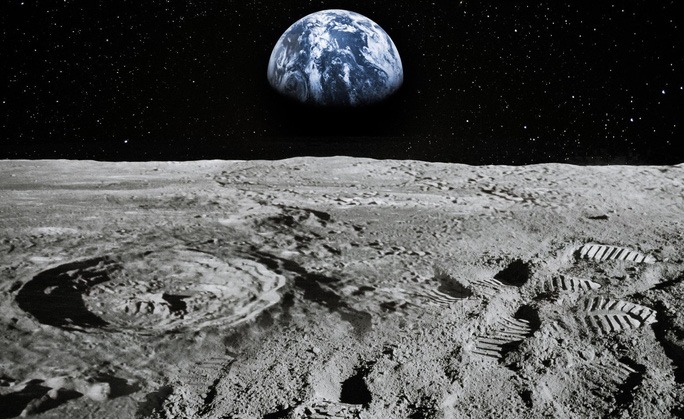The search for extraterrestrial life has captivated humanity for centuries, sparking curiosity and imagination. With advances in space exploration and technology, NASA has made significant strides in identifying potential habitats beyond Earth. Recently, NASA revealed groundbreaking findings on where “healthy, Earth-like” creatures could exist, shedding light on the possibility of life beyond our planet. In this article, we will explore these discoveries, the criteria for Earth-like habitability, and the implications for our understanding of life in the universe.
The Quest for Extraterrestrial Life
NASA’s search for extraterrestrial life focuses on identifying environments that can support life as we know it. This involves studying planets and moons within our solar system and beyond, looking for key indicators such as the presence of water, suitable temperatures, and the right chemical ingredients. The discovery of such environments could point to the existence of “healthy, Earth-like” creatures—organisms that thrive in conditions similar to those on Earth.
Exoplanets: The New Frontier
One of the most promising areas of research is the study of exoplanets, planets that orbit stars outside our solar system. The Kepler Space Telescope and the Transiting Exoplanet Survey Satellite (TESS) have identified thousands of exoplanets, many of which reside in the habitable zone of their parent stars. The habitable zone, often referred to as the “Goldilocks Zone,” is the region around a star where conditions are just right for liquid water to exist—a crucial ingredient for life.

Promising Candidates: Earth-like Exoplanets
Several exoplanets have emerged as promising candidates for hosting Earth-like life. Among them is Proxima Centauri b, an exoplanet orbiting the closest star to our solar system, Proxima Centauri. This planet lies within its star’s habitable zone and has a rocky composition similar to Earth. Another notable candidate is TRAPPIST-1e, one of seven Earth-sized planets orbiting the star TRAPPIST-1. TRAPPIST-1e, in particular, has garnered attention due to its potential to maintain liquid water on its surface.
Mars: A Neighborly Possibility
Within our solar system, Mars remains a top contender in the search for extraterrestrial life. NASA’s rovers and orbiters have provided compelling evidence that Mars once had liquid water on its surface and may still harbor water in underground reservoirs. The discovery of organic molecules and seasonal methane emissions on Mars suggests that the planet could support microbial life. Future missions, such as the Mars Sample Return mission, aim to bring Martian soil samples back to Earth for detailed analysis, potentially confirming the presence of past or present life.
Ocean Worlds: Hidden Habitats
Beyond Mars, NASA has identified several “ocean worlds” within our solar system that could host life. Jupiter’s moon Europa and Saturn’s moon Enceladus are prime examples. Both moons have subsurface oceans beneath their icy crusts, with evidence of hydrothermal activity on their ocean floors. These hydrothermal vents could provide the energy and nutrients needed for life, similar to those found in Earth’s deep oceans. NASA’s upcoming Europa Clipper mission aims to explore Europa’s potential habitability further.

Criteria for Earth-like Habitability
To determine whether a planet or moon can support Earth-like creatures, scientists consider several key criteria:
1. Liquid Water: The presence of liquid water is essential for all known forms of life. It acts as a solvent for biochemical reactions and a medium for transporting nutrients and waste.
2. Stable Climate: A stable climate with moderate temperatures is crucial for sustaining life. Extreme temperatures can inhibit biological processes or lead to the destruction of organic molecules.
3. Chemical Ingredients: Essential elements such as carbon, hydrogen, nitrogen, oxygen, phosphorus, and sulfur must be present to support life. These elements are the building blocks of biomolecules like DNA and proteins.
4. Energy Sources: An energy source, such as sunlight or chemical reactions, is necessary to power biological processes. Planets and moons with active geological processes or stellar radiation are considered favorable.
Implications for Our Understanding of Life

NASA’s revelations about potential habitats for Earth-like creatures have profound implications for our understanding of life in the universe. The discovery of even microbial life beyond Earth would revolutionize biology, chemistry, and our perception of life’s uniqueness. It would suggest that life can emerge in diverse environments, increasing the likelihood of finding complex, multicellular organisms elsewhere.
Furthermore, identifying Earth-like habitats enhances our understanding of planetary formation and evolution. It provides insights into how planets develop conditions conducive to life, informing future explorations and the search for habitable worlds.
A New Era of Discovery
NASA’s ongoing efforts to identify where “healthy, Earth-like” creatures could exist mark an exciting era of discovery. As we continue to explore our solar system and beyond, each finding brings us closer to answering one of humanity’s most profound questions: Are we alone in the universe? With each mission and discovery, we unlock new possibilities, expanding our knowledge and igniting our imagination. The search for extraterrestrial life is not just a scientific endeavor but a journey that connects us to the cosmos and our place within it.

